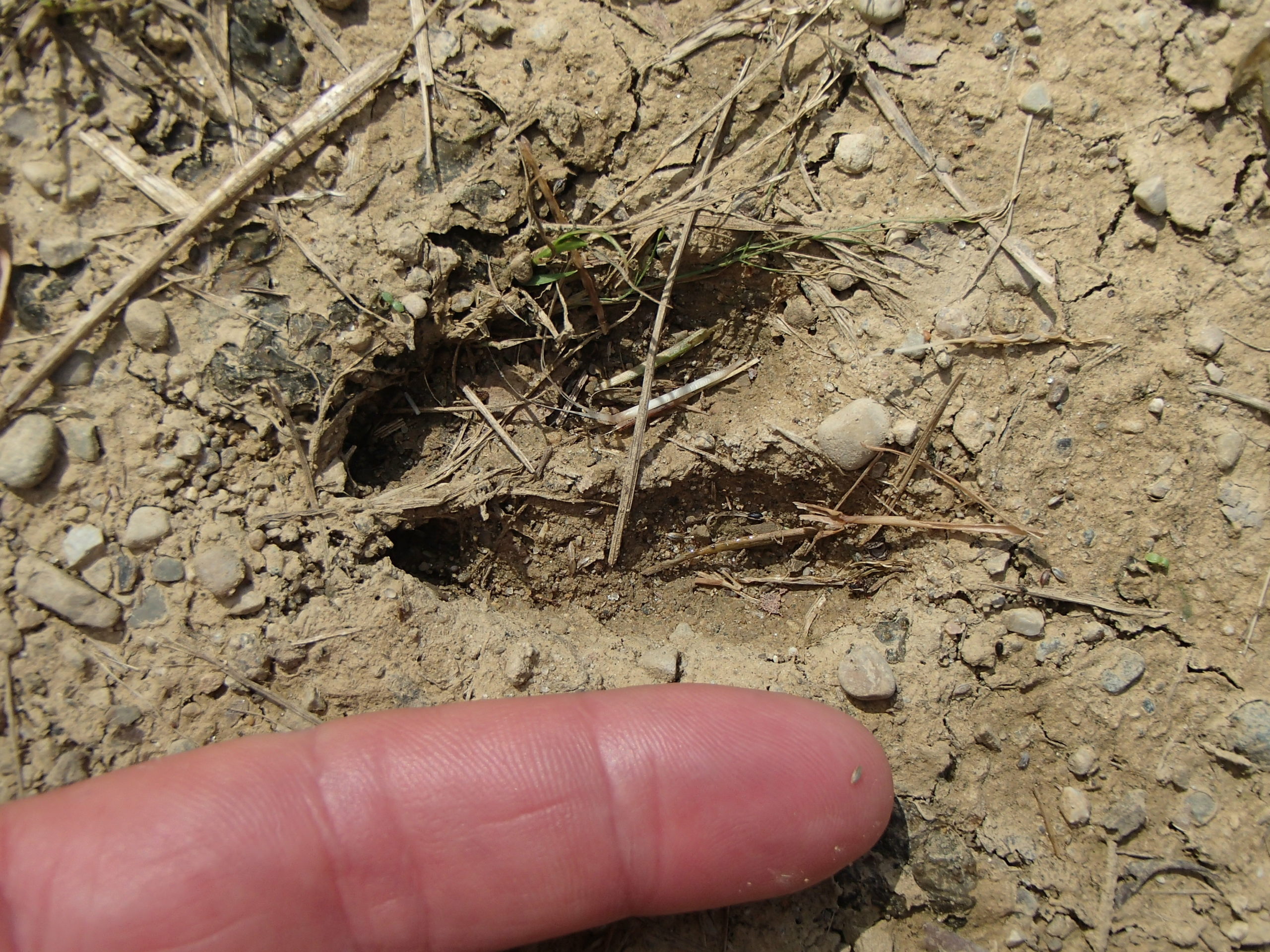
Every week, I receive at least one email with photographs of tracks or scat with a request to identify the creature that left it. Since I’m currently studying river otters and coyotes, the majority of photos are what the sender assumes are coyote or otter sign. I love getting these. Very few are actually otter or coyote, but those few have been very important in documenting new sites. And the ones that aren’t what the sender assumed are interesting in that I’ve learned what can be mistaken for otter and coyote sign, and that has helped hone my own wildlife sign interpretation skills.
Interpreting wildlife sign from photographs is quite challenging, especially when there is no obvious scale, and in some cases impossible when the photo lacks key information, such as the “gait” or trail of tracks in addition to a photo of a single print. But it’s always a fun exercise.
The ability to identify wildlife spoor, or the sign that animals leave in the field in the form of tracks, scat, browse and scrapes, is an important skill for field biologists. Yet it is not often included in college biology courses, including my courses as an undergraduate titled “Mammalogy” and “Field Ecology.”
I was first introduced to reading wildlife spoor in graduate school while taking “Field Mammalogy.” Ironically, it was not the professor who led the field excursions but his assistant: a high-school educated, professional trapper in his 70s named John Kulish. John had started trapping when he was a young kid during the depression, and with the help of an older mentor who trapped during the late 1800s, he became proficient enough to raise a family in southern New Hampshire on his earnings as a trapper and hunting guide.
More recently, I was introduced to a program with the odd name “CyberTracker,” trackercertification.com, that has been an excellent venue for developing my reading wildlife spoor skills. In 2009, two of the CyberTracker instructors evaluated experienced Texas Parks and Wildlife Department staff who had been surveying for river otters. Thirty-seven percent of otter tracks were misidentified, and 26 percent of tracks from other species were misidentified as otter tracks.
Just this year, I received a link to iNaturalist that had photo 1. A well-respected colleague with a doctorate in biology and employed as a field biologist identified these tracks as white-tailed deer. While the individual prints might be construed as the split hooves of a deer (photo 2), the stride (distance between each footprint) and trail width (measured from the outside of a left foot to the outside of a right) doesn’t work. Photographed on the Stony Brook University campus, this is most likely the bounding pattern of a gray squirrel moving toward the camera.
Photo 3 is the walking gait of a deer in snow. Note the relatively long stride (20 inches scaled off of my glove) and the 5- to 6-inch trail width. Deer prints don’t line up one directly in front of the other.
Another photo I received this week was a mistaken otter ID. Photo 4 shows a raccoon’s left hind foot and right front foot. The arrow points to the inner toe pad on the hind, which is lower down on the foot than the other toes.
Photo 5 (Callie Velmachos photo) depicts otter tracks with the arrows pointing to the inner toe on the hind feet, which are lower down on the foot than that of the raccoon. This may not be easily seen in all substrates, and raccoon tracks are often mistaken for otter as both have five toes on each foot and foot sizes are very similar. To eliminate this mistake, I encourage trackers to examine the gait.
The common gait for raccoons is a walking gait (photo 6, and yes, that’s a deer track in front of my foot). Note the lines that I’ve drawn across the leading edge of each pair of tracks. They form diagonals whose slopes alternate with each pair. Otters do not utilize this gait.
In studying tracks, look closely at the individual prints for number and arrangement of toes, size, shape and size of toe pads and heel pads, and whether claws are visible. And also look at the overall trail pattern. If taking a photo, include something for scale.